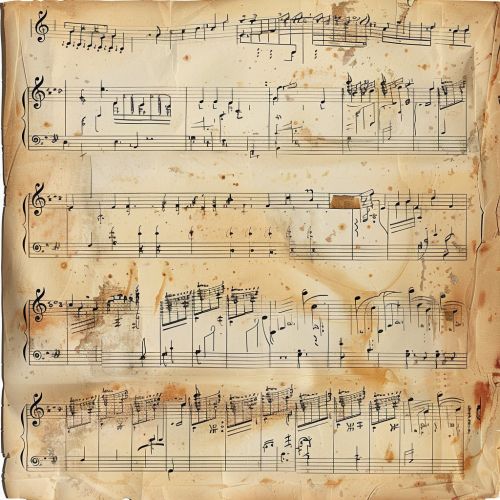Theme and variations
Introduction
The concept of "Theme and Variations" is a fundamental structure in music composition, where a theme or melody is presented and then altered or transformed in subsequent iterations. This form of musical development has been a staple of Western classical music since the 16th century, but it can also be found in many other musical traditions around the world.


Historical Background
The origins of the theme and variations form can be traced back to the Renaissance period, when composers began to experiment with the idea of taking a known melody and altering it in various ways to create a new piece of music. This practice became more formalized in the Baroque era, with composers such as J.S. Bach and G.F. Handel using the form in their keyboard works.
Structure of Theme and Variations
In a typical theme and variations composition, the theme is presented first in its original, unaltered form. This is usually a simple, easily recognizable melody that serves as the foundation for the rest of the piece. The theme is then followed by a series of variations, each of which alters the theme in some way. These alterations can involve changes in rhythm, melody, harmony, or instrumentation, among other things.
Types of Variations
There are many different ways in which a theme can be varied, and these can be broadly grouped into several categories:
- Melodic Variations: In these variations, the original melody of the theme is altered. This can involve changes in the rhythm, the pitch contour, or the intervals between notes.
- Harmonic Variations: Here, the chords that accompany the melody are changed, while the melody itself remains the same. This can result in a dramatically different sound, even though the melody is unchanged.
- Rhythmic Variations: In rhythmic variations, the rhythm of the theme is altered. This can involve changes in the meter, the tempo, or the rhythmic pattern of the melody.
- Ornamental Variations: These variations add decorative notes or embellishments to the theme. These can include trills, mordents, and other types of musical ornaments.
- Contrapuntal Variations: In these variations, the theme is combined with a new, independent melody in a contrapuntal texture.
Notable Examples of Theme and Variations
There are countless examples of the theme and variations form in the classical music repertoire. Some of the most notable include:
- Beethoven's "Diabelli Variations": This monumental work consists of 33 variations on a waltz by Anton Diabelli. It is considered one of the greatest examples of the form.
- Brahms's "Variations on a Theme by Haydn": This work is based on a theme attributed to Haydn, although its true authorship is uncertain.
- Mozart's "Twelve Variations on 'Ah vous dirai-je, Maman'": This piece is based on the melody of the French folk song "Ah vous dirai-je, Maman", which is also known as the tune for "Twinkle, Twinkle, Little Star".
Theme and Variations in Modern Music
The theme and variations form has also been used by many composers in the 20th and 21st centuries. For example, Schoenberg and Webern used the form in their atonal and twelve-tone works. In popular music, the form can be seen in the verse-chorus structure of many songs, where the chorus (the "theme") remains the same, while the verses (the "variations") change.
Conclusion
The theme and variations form is a versatile and enduring structure in music composition. It allows for a wide range of creative possibilities, while providing a familiar framework for the listener. Whether in a classical sonata, a jazz improvisation, or a pop song, the theme and variations form continues to be a vital part of the musical landscape.
